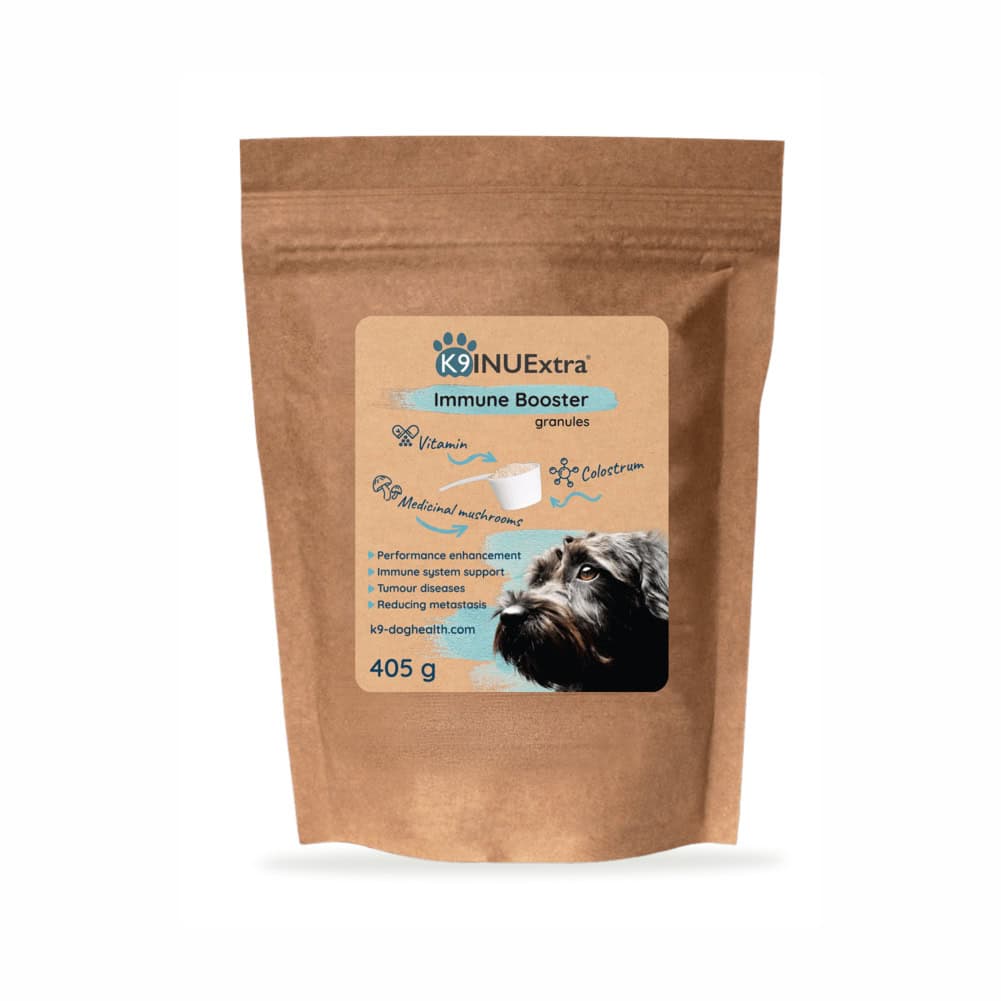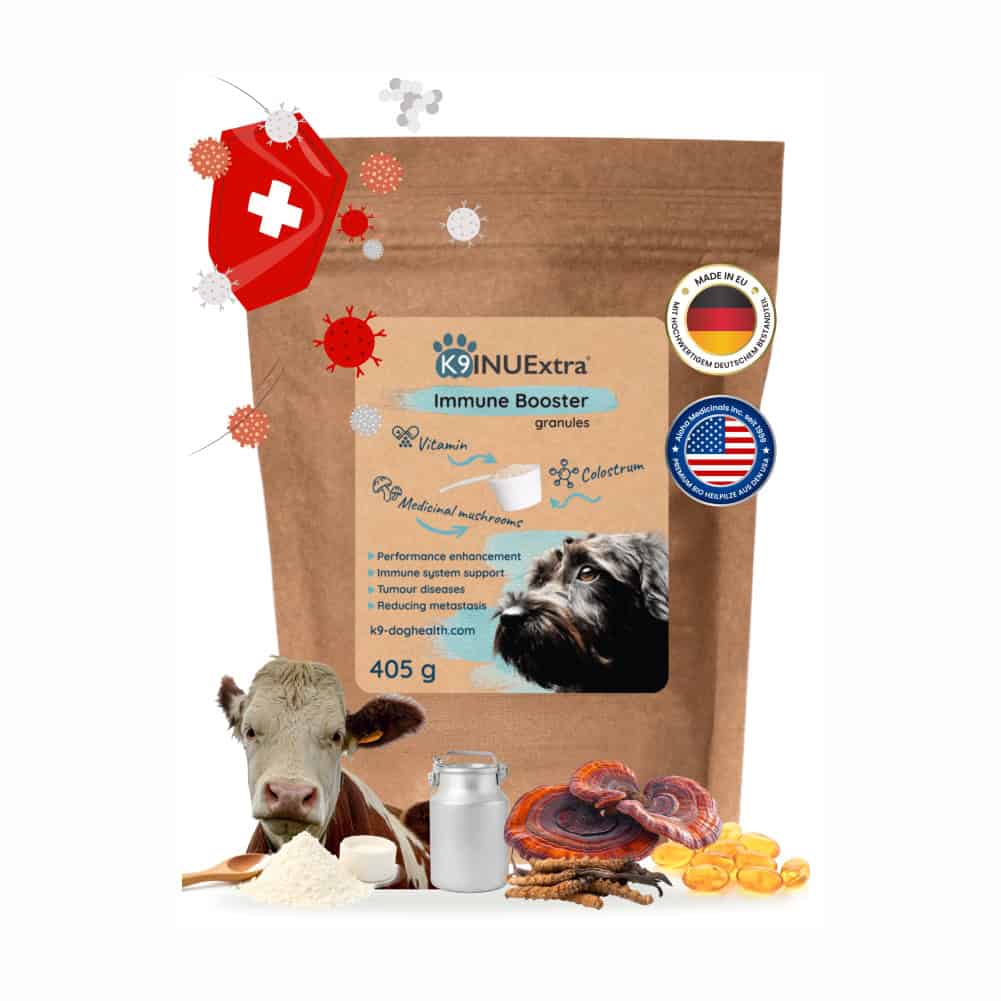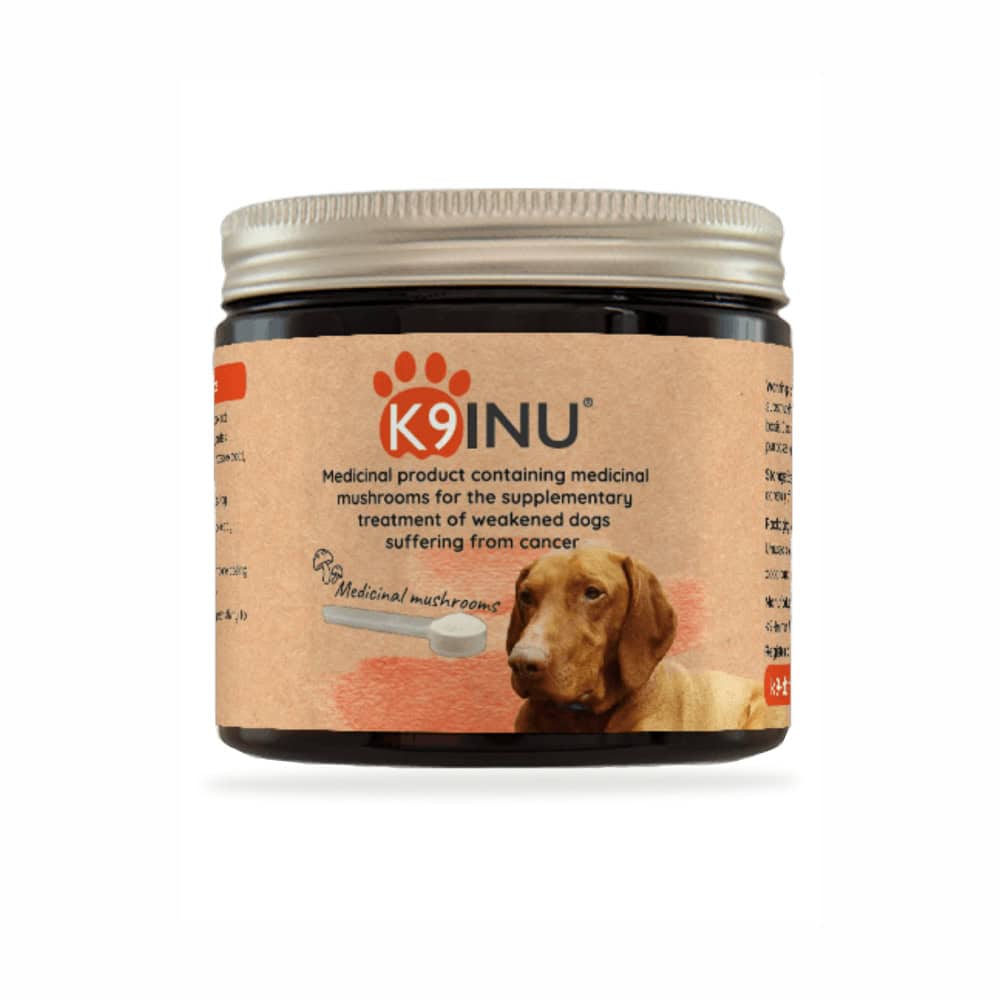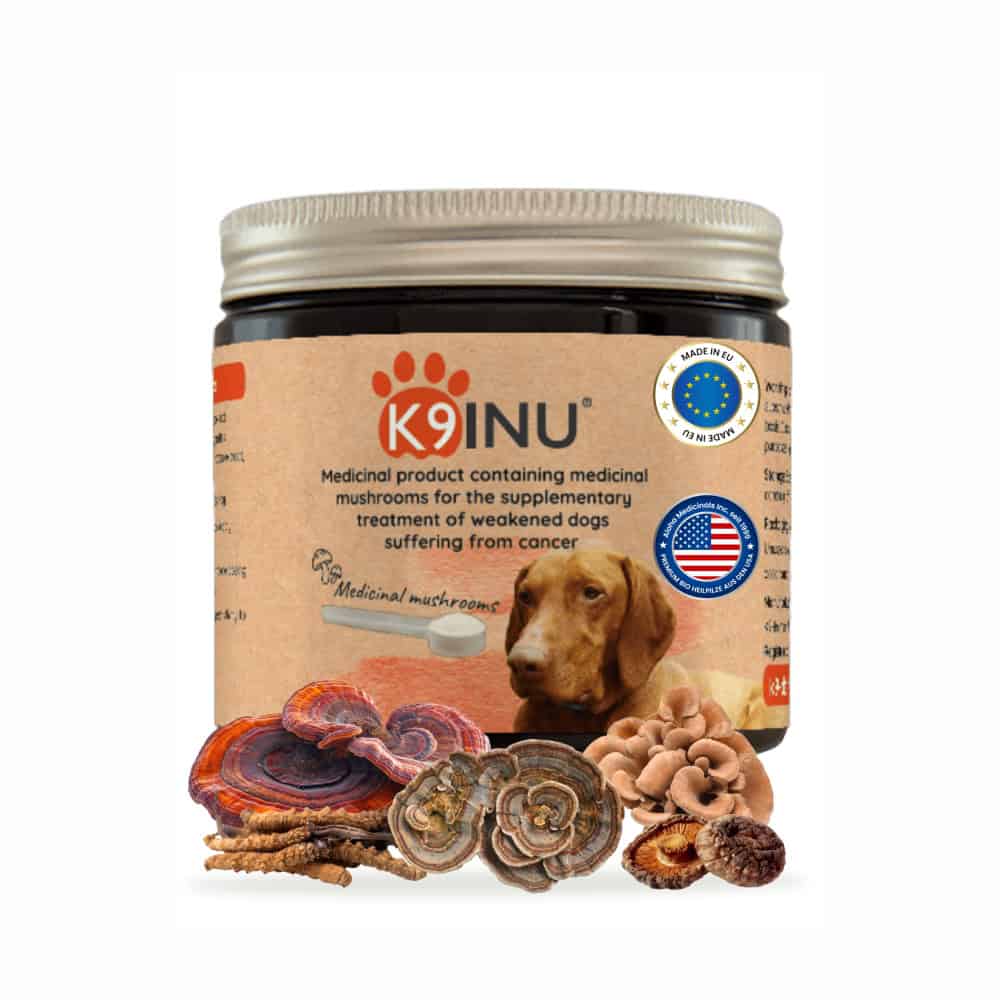Hemangiosarcoma in dogs is a very common, highly malignant tumor, and metastases often appear even in the early stages.
Hemangiosarcoma mainly occurs in areas richly supplied with blood vessels. However, it can actually appear anywhere in the body, both on the surface and internally. It attacks the blood and blood vessels and, through them, the vital organs such as the spleen, liver, and heart. It may also develop in the bones, kidneys, bladder, or in some cases under or on the skin.
Since this tumor grows on blood cells, the tumors themselves are often filled with blood. Eventually, the tumor may rupture, causing internal bleeding.
It can occur in any age or breed of dog, but it is most common in older males, especially boxers, setters, shepherds, and retrievers.
Symptoms of hemangiosarcoma in dogs

The symptoms largely depend on the location of the tumor. They may include general weakness, lethargy, loss of appetite, vomiting, sudden weight loss, nosebleeds, fainting, anemia, pale mucous membranes, arrhythmia, abdominal swelling, dark reddish lumps on the skin, or firm but movable nodules under the skin.
Early diagnostic options
Canine hemangiosarcoma is an insidious tumor that often causes visible symptoms only in advanced stages. This is why regular veterinary check-ups are crucial. Diagnosis may include:
- abdominal ultrasound and X-ray,
- CT or MRI scans to locate the tumor precisely,
- blood tests, especially a sudden drop in hematocrit and red blood cell count.
The earlier the disease is detected, the greater the chance of treatment and prolonged survival.
The three most common types of canine hemangiosarcoma and their symptoms
Spleen hemangiosarcoma
- Weakness
- Pale gums
- Lethargy
- Reduced appetite
- Enlarged, distended abdomen
Heart hemangiosarcoma
This tumor affects the heart, reducing its ability to circulate blood effectively. The tumors are fragile and may cause bleeding into the pericardium (the sac surrounding the heart), leading to pericardial tamponade. As the disease progresses, the following symptoms may occur:
- Collapse, fainting
- Lethargy
- Weakness
- Coughing
- Difficulty breathing
- Exercise intolerance (fatigue during walks or activity)
- Vomiting
Skin or subcutaneous hemangiosarcoma
This type develops on the skin’s surface or just beneath it, usually as a lump, nodule, or blister-like lesion. If detected early, affected dogs often remain in good general condition. Owners may notice the following signs:
- Reddish or purplish lump, most often on sparsely haired areas such as the abdomen or limbs
- Bleeding or bruising around the tumor
- Bleeding directly from the tumor
- In advanced stages: lethargy, lameness, loss of appetite, weakness, or other general symptoms
Important: If you notice any of these symptoms in your dog, consult a veterinarian immediately! Hemangiosarcoma is fast progressing, and early diagnosis can be life-saving.
Treatment of hemangiosarcoma in dogs
Treatment generally involves surgical removal of the tumor, followed by chemotherapy. Surgery is usually only an option for superficial, near-surface tumors or for those in internal organs if the tumor is identifiable.
Typically, not only the tumor itself but also some of the surrounding healthy tissue is removed to ensure successful surgery. Because this tumor type spreads easily, quickly, and silently throughout the body, chemotherapy usually follows surgery.
Survival rates
Unfortunately, the prognosis of canine hemangiosarcoma is poor, but treatment significantly influences survival time:
- Surgery (e.g., splenectomy) without chemotherapy: on average 1–3 months
- Surgery combined with chemotherapy: 4–6 months
- Experimental immunotherapies and targeted treatments: up to 9–12 months
However, early detection, modern treatments, a proper cancer diet, and immunomodulatory therapies (K9 INU® and K9 INUFactor®) can greatly improve the chances of favorable outcomes.
Risk factors and prevention
The exact cause of hemangiosarcoma in dogs is unknown, but certain factors increase the risk: advanced age, male sex, and some large breeds (retrievers, German shepherds, boxers, setters). Although complete prevention is not possible, owners can do a lot:
- regular veterinary screening,
- a balanced, antioxidant-rich diet,
- supporting the immune system with natural supplements.
Hemangiosarcoma is fundamentally a disease caused by the immune system’s failure to function properly!
It develops when the immune system fails to recognize abnormal cells as invaders. These cells then form fragile blood vessels, which grow, develop into tumors, rupture, and cause internal bleeding.
Traditional Asian medicine, as well as modern medical science, use natural compounds in cancer treatment. Their goal is to optimize immune function and restore defense mechanisms.
The role of immunomodulatory therapies in canine cancer
Immunomodulatory therapies are receiving increasing attention in treating canine cancers, as they support the body’s natural defense mechanisms, enhance treatment efficacy, and improve quality of life. These therapies are particularly useful in hemangiosarcoma and lymphoma, but also play a key role as complementary treatments in other cancers.
How do immunomodulatory therapies work?
Their goal is to strengthen the immune system’s own defenses against cancer cells. This may include:
- Immune cell activation: Stimulating T-cells and natural killer cells (NK cells) that recognize and destroy cancer cells.
- Anti-inflammatory effects: Tumors often develop in chronic inflammatory environments. Immunomodulators regulate this inflammation, slowing tumor growth.
- Improved cell communication: Helping immune cells communicate more effectively, allowing faster recognition of abnormal cells.
When are immunomodulatory therapies recommended?
These therapies can be effectively used:
- In the early stages of cancer, as complementary therapy,
- Following surgery or chemotherapy, to support recovery,
- In chronic conditions, to improve quality of life and slow tumor growth,
- As palliative care, when complete recovery is no longer possible but improving quality of life is the goal.
Immunomodulatory therapy in hemangiosarcoma
Lymphoma is a cancer of the lymphatic system, directly affecting immune cells. Immunomodulatory therapies are especially significant in these cases:
- They help restore the immune system’s balance, weakened by the tumor and chemotherapy.
- They reduce the risk of infections, which is common in dogs with lymphoma due to immune system involvement.
- They increase chemotherapy effectiveness, since a strong immune system destroys cancer cells more easily.
One example of such immunomodulatory therapy is the use of medicinal mushrooms, widely applied in Asian medicine.
Strengthening the immune system

Many veterinarians emphasize that while a dog’s life can be prolonged, the tumor may remain. However, if a large part of the tumor can be removed and the liver is not affected, dogs with hemangiosarcoma often respond well to traditional treatments combined with immune-supporting therapies (K9 INU®, K9 INUExtra®, K9 Immunity™, K9 Immunity Plus™).
Frequently asked questions (FAQ)
How long can a dog live with hemangiosarcoma?
On average, a few months, but depending on the type of treatment, it may range from 1 to 12 months. Early detection and immune system support can significantly improve chances.
Which breeds are more prone to hemangiosarcoma?
Mostly large, older male dogs, especially retrievers, German shepherds, boxers, and setters.
Can natural supplements help?
Yes, immunomodulatory mushrooms, colostrum, and antioxidants may complement traditional treatments, but they are not sufficient on their own. Always consult your veterinarian!
More about dog cancers
- Mastocytoma in dogs (Mastocitoma)
- Dog mammary tumor (Kutya emlődaganat)
- Osteosarcoma in dogs (Kutya csontdaganat)
- Dog lymphoma (Kutya limfóma)
For more information, read our article on dog cancer diet, check our guide on the different tumor symptoms, or browse our range of immune-boosting supplements.
Click here if you want to read about hemangiosarcoma kutyáknál in Hungarian.
Or click here if you want to read about
Sources:
- Brown NO, Patnaik AK, MacEwen EG. – Canine hemangiosarcoma: retrospective analysis of 104 cases. J Am Vet Med Assoc. 1985
- Smith AN. – Hemangiosarcoma in dogs and cats. Vet Clin North Am Small Anim Pract. 1985
- De Nardi A.B., Rodigheri S.M., Huppes R.R., Fonseca-Alves C.E., Amaral A.S., et al. – Diagnosis, Prognosis, and Treatment of Canine Hemangiosarcoma: A Review Based on a Consensus Organized by the Brazilian Association of Veterinary Oncology, ABROVET.Cancers. 2023; 15(7):2025.






